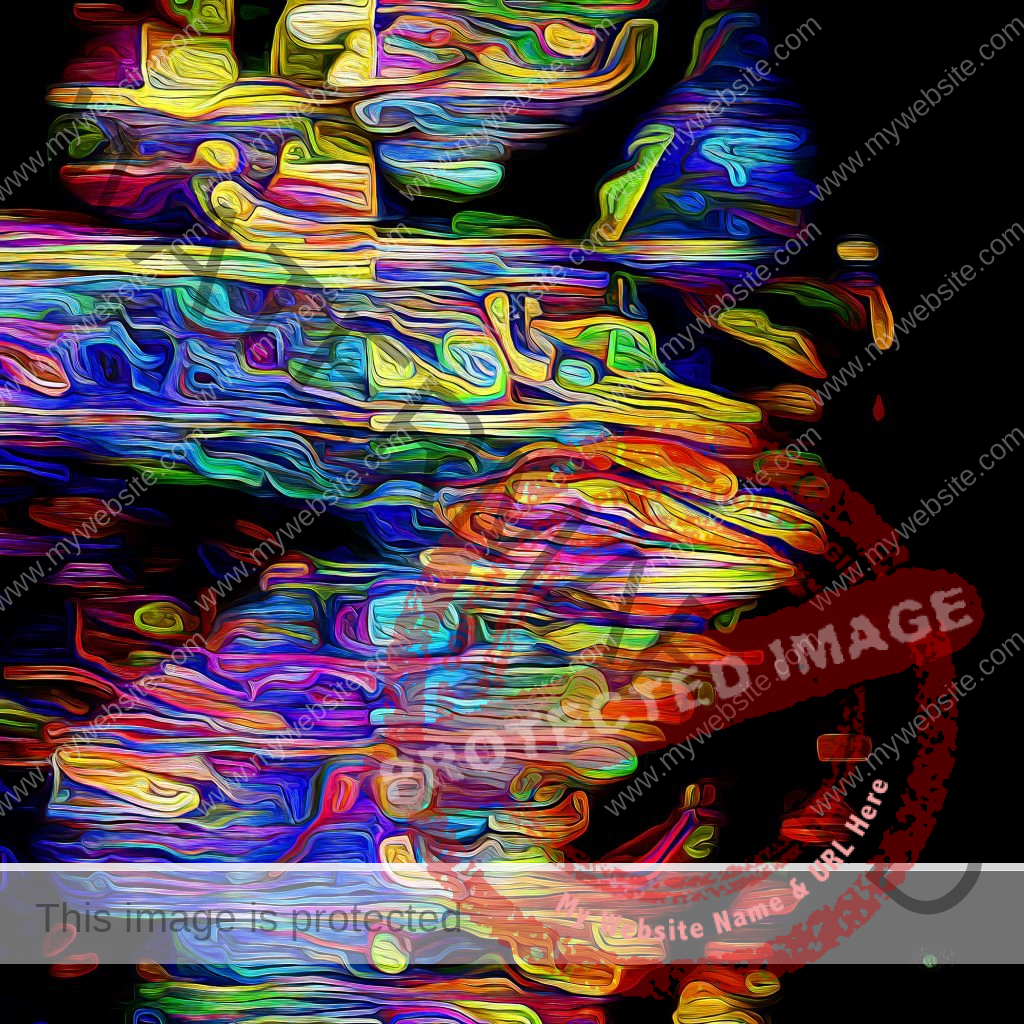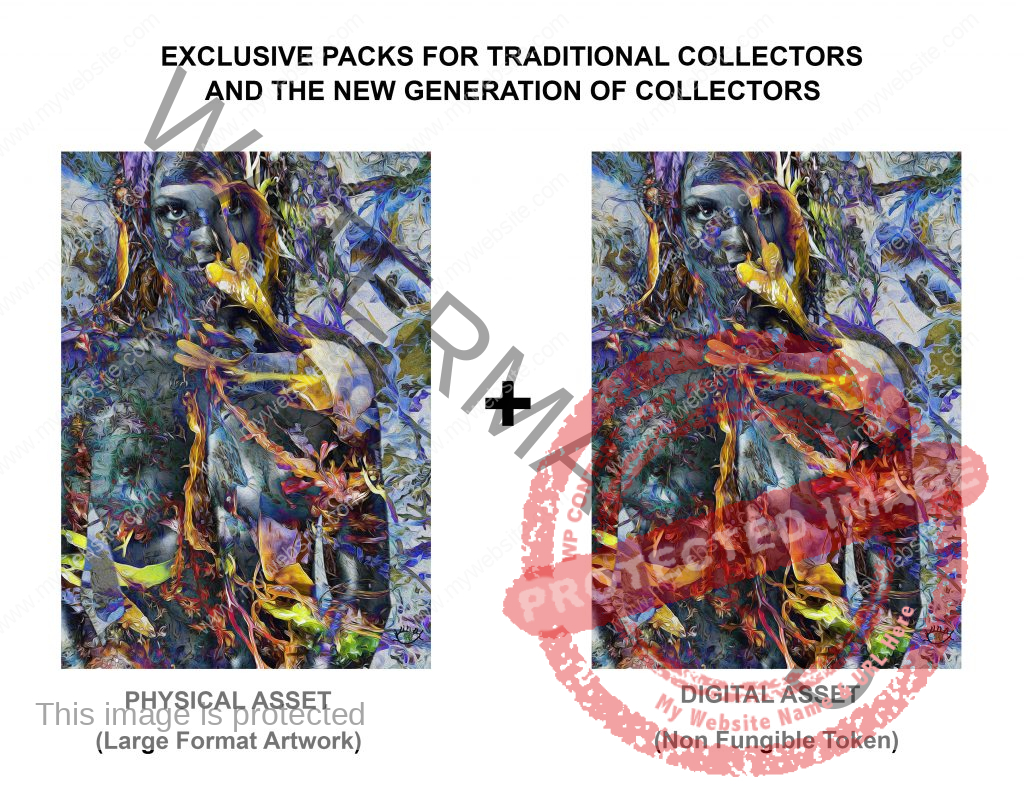Artusnow’s artistic statement
As a contemporary artist, I feel I have to help resolving the complexity of the art market. I think a good way to to do it would be helping to build a bridge between “traditional” art (paintings created on a physical media) and what could be the “future” of art (intangible digital assets inserted in the blockchain).
That will also allow traditional galleries that are looking to the future of the art industry to show in their collections contemporary digital paintings “that are at the same time tangible and intangible assets”.
1- The digital renaissance of the art industry:
During Covid-19, online sales accounted for 37% of gallery sales (compared to 10% in 2019), essentially replacing in person art fair revenue, which many galleries had previously reported had contributed 40% of their annual sales.
Meanwhile, artists create work that reflects the society in which they live, so the art of today is also increasingly digital in nature. Time-based media — such as video art — as well as new media art forms like VR & AR are becoming more and more prominent as multidisciplinary artists experiment with emerging mediums and online platforms.

So, like many other industries, the art world is the midst of a digital renaissance. Galleries and museums are urgently searching for more channels to connect with their buyers and audiences, while artists are experimenting more and more with digital mediums.
These mediums, however, possess unique challenges that differentiate them from traditional, object-based artworks. In order to circulate in the marketplace, for example, such digital mediums have traditionally been sold on a USB stick, an embarrassingly low-fi solution for a sophisticated cultural product.
That’s why I think that NFTs will be the foundational building blocks for a new generation of technologically-savy and digitally-native art buyers. NFTs can bypass many of the trappings of the traditional object-based art market: there are no logistics with digital art, no storage fees, and no “insurance-while-in-transit” required. Provenance is verified, uniqueness is assured, and the market is already set up for “peer-to-peer” trades between collectors, allowing the art to seamlessly circulate while accruing value.
2- A solution for a smoothy transition to the future, designed for galleries
Established galleries are fast-paced, lean businesses that generally do not have the administrative bandwidth to quickly develop and deploy emerging technologies like blockchain; the same goes for many museums and cultural nonprofits.

These exclusive packages will enable a new generation of collectors access to the art market. According to the 2020 UBS Art Basel Art Market report, “Millennials now make up nearly half (49%) of all collectors globally,” and “92% of millennials have reported buying art online.”
By expanding into NFTs market, established galleries will create new revenue streams at price points that are accessible to a wider base of potential buyers, specifically Millennials and Gen Z.
For an another hand, art galleries that already represent artists working in digital formats are in urgent need of a solution for transacting these artworks — one that will ensure provenance, verify uniqueness and enforce terms for future exhibition and resale rights.
3- How to create a user-friendly entry point for traditional collectors into the emerging field of blockchain technology, saving them time and money?
The digital art market has been growing exponentially in recent years, but the traditional art market has been slow to adapt and upgrade its systems accordingly.
In addition, the seasoned traditional collectors don’t have the mindset and the knowledge to purchase NFTs.
That’s why it could be an incredible advantage for galleries to sell both a physical large format contemporary painting + an NFT of the same artwork at the same time.

This will allow art collectors who are reluctant to invest in intangible assets to own a tangible painting (a 100x 150 cm unique creation printed on a 3.0 mm Dibond aluminum, for instance) PLUS an intangible digital asset inserted in the blockchain (a Non Fungible Token) for the same price.
4- How these exclusive packs of tangible and intangible paintings work?
As an innovative digital artist that understand the changes in the art industry, I will work with galleries that share my vision of the future and will create on demand for their clients exclusive packs containing a large format physical painting + an NFT of the same painting.
The final client will be able to own an NFT (the gallery will hep him to create a Metamask wallet and purchase some Ethereums) and will be happy to get back to his house with a physical outstanding original painting for the same price.

5- Artusnow’s package benefits for art collectors:
- It’s easy: The art collector will be helped by the gallery to create a Metamask wallet to purchase Ethereums in order to buy his NFTs.
- It’s safe: The art collector will be able to prove the ownership of his digital painting, even if his physical painting is lost, damaged or stolen.
- It’s a good business: The art collector will own an original tangible asset + an original intangible asset (both representing the same artwork, and both unique) for the same price.
- It’s a good investment: The art collector will be able to sell the physical painting and the NFT separately, depending of the increasing value of each one.
6- Artusnow’s package benefits for galleries:
- It’s smart: Entering in what could be the future of the art market, without renouncing to the prestige and years of experience of your gallery.
- It’s innovative: Offering an innovative product that does not exist at the moment in the Spanish market, neither in the European market.
- It’s a good business: Interesting traditional customers who will have heard about NFTs, without knowing very well what they are and how to buy them.
- It’s a new business: Coming up with this new package will attract a new generation of technologically-savy and digitally-native art buyers to the gallery, showing the power of innovation in a very closed and traditional market.
- It’s easy to sell: Your customers will have for the same price, a physical artwork + the corresponding NFT.


